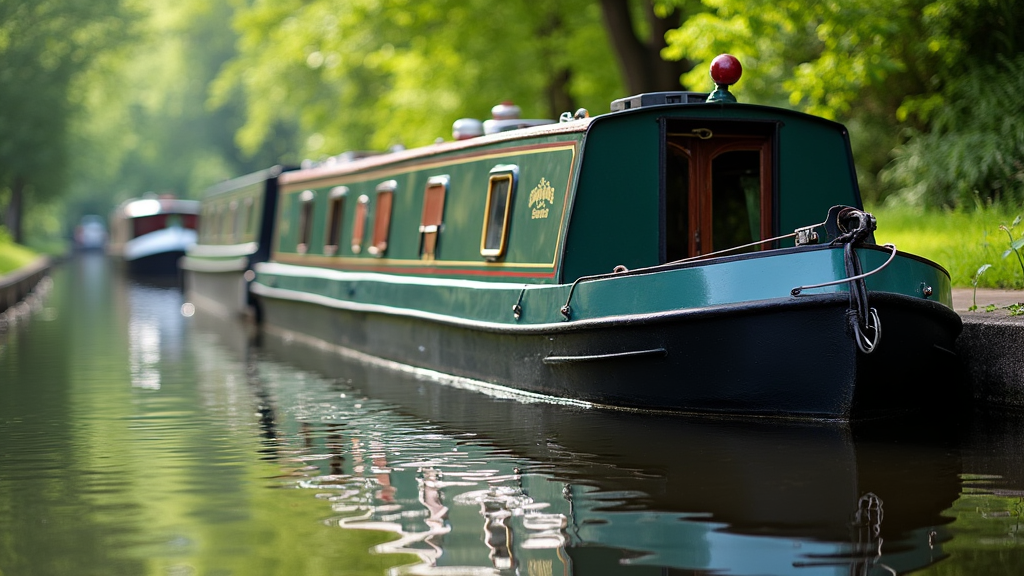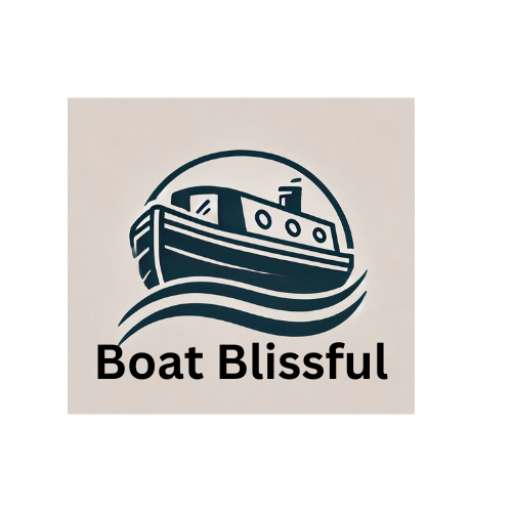What To Look For During A Narrowboat Inspection
Narrowboats have a way of capturing the imagination, especially for anyone drawn to life along Britain’s canal networks. Whether you’re thinking about full-time living or just weekend escapes, buying a narrowboat is a big step. Inspecting the boat before you commit is really important for avoiding headaches down the line. Here’s a detailed walk-through of what I always look for during a narrowboat inspection, built from plenty of experience, a couple of mistakes, and a lot of advice gathered from narrowboat pros.

Why a Narrowboat Inspection Matters
Narrowboats look charming, but their condition can be tricky to judge from the outside. The UK’s narrowboat market includes vessels that range from newly fitted out gems to boats that have spent years without proper care. A narrowboat will almost always be a big investment, so a proper inspection helps you make sure you’re getting value for your money, and helps steer you clear of nasty surprises that can add big costs later.
Whether you’re checking a narrowboat yourself or bringing in a professional marine surveyor, developing a solid understanding of what matters helps you feel way more confident about your search.
Main Areas to Check During a Narrowboat Inspection
A good inspection digs into much more than just the paintwork or the cabin furnishings. Focus on structural features, mechanical systems, interior condition, and paperwork. Checking each area in detail gives you a much clearer idea of what you’re buying, and where extra negotiation or investigation might be needed.
Hull and Exterior: The Foundation of Boat Health
The hull is what keeps your narrowboat afloat, so its condition is super important. Start by walking the exterior carefully. Look for dents, visible rust, and signs of previous welding. It’s usually best to inspect the boat while it’s out of the water (“on the hard”), but if that’s not an option, at the very least have a close look at the waterline and as much of the bottom plate as possible with a torch.
- Steel Thickness: On older boats, thinning steel is common, so ask about recent thickness measurements. Survey reports will show whether plating has worn dangerously thin.
- Blisters and Pitting: Look for bubbles, pits, and irregular paint patches; these can hint at deeper corrosion problems.
- Blacking and Anodes: Check the state of the blacking (protective paint). Good blacking is vital. Sacrificial anodes are meant to protect the hull from corrosion too; if they look more than half gone, they’re overdue for replacement.
I’ve found that viewing the hull at an angle helps spot surface issues, especially under good lighting. If you see anything worrying, make a note to bring it up with a marine surveyor.
Engine and Mechanical Systems: Reliability Counts
The engine is the heart of a narrowboat, and repairs can get pricey fast. Skipping a close inspection here is never worth it. Run the engine with the owner present, and listen for odd knocks or smoky emissions.
- Visual Clues: Look out for oil leaks, cracked hoses, rusty brackets, or any makeshift DIY fixes that make you uneasy.
- Service Records: Ask to see service logs; regular oil changes and filter replacements indicate a well-cared-for engine.
- Cooling System: Touch the coolant pipes after running. Hot pipes are normal, but weird cold patches can signal blocked flows.
- Gearbox and Prop: Check that gear selection is smooth, there’s no grinding, and that the propeller turns freely with no visible damage.
If you’re new to engines, it’s worth watching a few videos or reading basic guides to diesel engines so you know what looks right and what seems off.
Interior Condition: Comfort, Damp, and Layout
Step into the cabin and let your nose and eyes do some of the work. A musty smell could mean hidden damp or leaks. Look for water stains on the ceiling or walls, peeling laminate, and soft patches in the floor (especially around windows, the bathroom, and the kitchen).
- Window Seals and Roof Hatches: Run a hand around windows and hatches for signs of moisture, rot, or failed sealant.
- Bathroom and Plumbing: Turn on taps and flush the loo. Check for leaks, listen to the water pump, and ask about the state of the water heater.
- Electrical Panel: See how tidy and labelled the electrics are; tangled wiring or mystery switches are a warning sign.
- Layout Practicality: Think about how the space works for you. Some boats have odd layouts or cramped sleeping spaces, so don’t get swept up by attractive furnishings alone.
A quick trick I use is feeling the back corners of storage areas and under furniture for cold or wet spots, which can show hidden leaks. Bring a torch to help check inside dark cupboards and behind panels for any sneaky patches of damp or mould. You can even bring a small moisture meter for checking suspicious spots more accurately.
Heating and Appliances: Living Comfortably Afloat
Staying warm and powered-up on a narrowboat is pretty important, especially in British winters. Check the condition and functionality of the stove (often multifuel), radiators, and any diesel or gas heating systems.
- Stove and Flue: Inspect the stove and flue for cracks, loose joints, and signs of color changes that signal overheating.
- Batteries: Check battery banks for swelling, corrosion, or loose connections. Ask how long the batteries last and when they were last replaced.
- Solar and Generators: If solar panels or a generator are fitted, ask to see them in operation and look at the control panel readings.
- Gas Safety: Test all gas appliances and review the last Gas Safe certificate. Smelling for gas around fittings isn’t foolproof but can catch issues.
Don’t be shy about flicking on switches and checking each outlet; previous owners sometimes “forget” to mention faults on less-used items. It’s also worth asking about the history of any appliance upgrades, as older systems sometimes need extra maintenance or are trickier to replace. When looking at central heating systems, check for radiator cold spots or leaks, and have the owner walk you through the system’s controls. Make sure to test kitchen appliances like fridges and ovens to confirm they work properly, especially if you plan to live aboard full-time.
Paperwork and Legal Bits: Staying on the Right Side
Narrowboats need certain paperwork to be compliant with British canal and river authorities. Before finalizing any deal, check:
- Boat Safety Scheme (BSS) Certificate: This is like a vehicle MOT for narrowboats. Valid certificates last for four years. No certificate means extra hassle, and costs, straight away.
- Proof of Ownership: Ensure you’re dealing with the rightful owner; ask for a clear bill of sale and identification.
- Mooring Agreement: If a mooring comes with the boat, read any contracts to check their terms, fees, and transfer rules.
- Insurance: You’ll need to arrange insurance before moving or cruising the boat.
It’s pretty handy to create a checklist of documents, so you can tick them off during the inspection and nothing is forgotten. Checking the builder’s plate (normally attached inside the cabin) alongside paperwork will confirm the build date and specification details. If you’re unsure about the documents, contact the Canal & River Trust or seek advice from experienced boaters’ forums, as paperwork mistakes can cause big legal headaches later.
Common Problems to Watch Out For
Spotting trouble on a walkthrough is half the battle. Here are a few classic problems I keep an eye out for:
- Electrolysis Damage: Stray electric current can corrode hull steel quicker than you’d think. Unusual pitting or localized rust can be a clue.
- Damp and Rotten Timbers: Under carpets and along skirting boards, bad timber can crumble to the touch. If you feel or smell damp, probe the wood gently for soft spots or rot and look for discoloration or mould patches.
- Sagging Roofs: Dips in the cabin roof can point to structural problems or past accidents.
- Tired or Outdated Fixtures: Old wiring, cracked tiles, faded upholstery, and homemade “fixes” often mean future repair bills.
Taking photos during your inspection is a smart move. You’ll have a reference for later, and it’s easy to share them with a knowledgeable friend or surveyor if any question marks pop up. Keep an eye out for telltale signs like newly painted areas hiding rust, patchwork windowsills, or suspiciously sealed joints as these can suggest coverups of larger issues. Check the engine bay for oily smells or built-up grime, which often signal leaks or lack of maintenance. Double-check the bilge (the bottom-most compartment) is dry and there’s no sign of standing water, which could indicate hull leaks or plumbing issues.
Handy Tips from the Waterways
Inspections aren’t just about faults; you can also pick up great ideas for improvements. Some owners have installed clever storage, new insulation, or offgrid tech that adds real value. I like to ask owners about what they’d change now or what’s worked especially well for them, since practical details don’t always show up in the listing.
- Look for clever pullout cupboards and underseat storage spaces, as these make small boats feel a lot bigger.
- Check for 12v USB sockets, LED lighting upgrades, and energyefficient appliances that help with offgrid living.
- Don’t forget outdoor features like roof boxes, bike mounts, or extra mooring pins, which can all make a difference to everyday canal living.
- Ask about modifications that boost comfort, like thicker insulation, secondary glazing, or soundproofing in engine bays. These extras are not always visible but make a real difference to daily life afloat.
- Some boats have foldaway tables, extra seating, or convertible beds, so take a moment to check how these mechanisms work.
Every inspection is a learning experience. Taking your time, being thorough, and asking lots of questions is really important to a good outcome. And if in doubt, calling in a qualified surveyor pays off every time, ensuring you avoid unexpected issues and have professional backup if you need to negotiate repairs or price reductions later on.
Frequently Asked Questions
Here are a few questions I hear a lot from first-time narrowboat buyers and fellow boaters:
How often should a hull be blacked?
Most people black the hull every 2-3 years, but boat type, steel age, and cruising habits can affect the schedule.
Can I live aboard any narrowboat?
Technically yes, but some are much more set up for year-round living, especially if they’re well insulated, ventilated, and fitted with heating and offgrid power.
What’s the biggest risk with older narrowboats?
Serious hull corrosion is the main danger. Always ask for a recent hull survey if the boat is more than 15-20 years old.
How do I know if a boat has a decent engine?
Check service records, look for smoke or noise when running, and have an engineer do a health check if you’re not engine-savvy yourself.
Final Thoughts
Inspecting a narrowboat covers everything from hull to headlamp. Taking a methodical approach makes it way less daunting. Take your time, use a checklist, ask questions, and always trust your instincts. Life afloat has its challenges but starting with the right narrowboat gives you a great foundation for adventure along the waterways.
